Horse Racing
“And they’re off!” Horse racing of all types is found in our racing section, including Thoroughbred, Quarter Horse, Harness, Steeplechase and Arabian racing.
Want to get lucky? Take a look at the Wagering to help guide you. Keep track of upcoming horse races and racing events in our Calendar of Events for Horse Racing.
Want to live the dream of owning a racehorse? Check out the Breeding, Partnerships, Sales & Bloodstocks sections where you can help yourself be a force in the Sport of Kings.
Need a place to train your baby and help develop his successful career? You will find both training facilities and professional racehorse trainers in our Training section. See you in the winners’ circle!
Popular Racing Sites
Horse Racing - General Information

by CL Cimino
The Cheltenham Gold Cup is the most prestigious of all National Hunt events. A lot of Britishers come to attend this racing event every year at Cheltenham Racecourse. While a lot of people follow the Cheltenham latest news to keep themselves abreast of all the happenings.
1- Arkle
Arkle is one of the biggest names in the horse racing world. He won many prestigious races in his career but his Cheltenham Gold Cup achievements truly immortalized his name. Timeform has given him the rating of 212 which is the highest ever awarded to a steeplechaser.
When Arkle first entered the Gold Cup in 1964, he was not a well-known racehorse. In fact, he was defeated at Newbury by Mill House in the 1963 Hennessy Gold Cup, and so everyone’s eyes were on the Fulke Walwyn trained racehorse who was regarded as a top favorite to win the race. However, Arkle was determined to win this time as he easily got the better of Mill House by five lengths.

by David Grening
Jockey’s goggles can be used by health-care workers in the fight against coronavirus.
Buoyed by Shirley Jerkens, the wife of trainer Jimmy Jerkens, jockeys at tracks currently racing in Florida, Oklahoma, and Arkansas are collecting new and used jockey’s goggles to send to hospitals nationwide for doctors and nurses to use as eye protection while treating coronavirus patients.
Goggles for Docs, an effort to get eye protection in the hands of health-care workers treating patients with COVID-19, began in late March when Jon Schaefer, general manager for Berkshire East Mountain Resort, a ski resort in Massachusetts, received an email from a New York doctor looking for used goggles as hospitals quickly became overrun with patients and there was a need for additional equipment. Word quickly spread, and several ski resorts were involved collecting goggles.
Shirley Jerkens saw a news report about it and reached out to Trevor Crist, one of the founders of Goggles for Docs, with the idea of using jockey’s goggles. Crist and his associates sent photos of jockey’s goggles to medical professionals who okayed them for use. A list of which hospitals are accepting goggles can be found at www.gogglesfordocs.com.
Jerkens, who is currently in Saratoga, reached out to jockeys Tyler Gaffalione (Gulfstream), Ricardo Santana Jr. (Oaklawn Park), Lane Luzzi (Will Rogers Downs), and Ricky Ramirez (Remington Park) to see if they could help with collecting goggles. Chamisa Goodwin, a placing judge at Oaklawn Park, is assisting in getting the goggles from Oaklawn sent to Goggles for Docs or directly to local hospitals that are in need of equipment.
Jerkens said Gaffalione also has reached out to local tack shops to see what supplies they might have.
“Right now, the biggest need is in Florida, California, and New York,” Jerkens said.
Read more: Jockey's Goggles Become Tool for Whipping Coronavirus
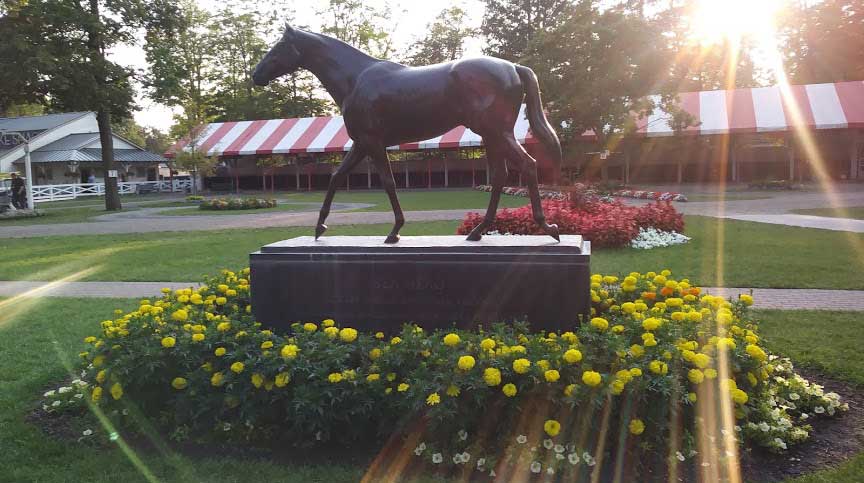
Contributed by Michael Pawluk
It’s April 27th, a grey, overcast day here in Saratoga. We’ve been locked down for what seems like several lifetimes, as COVID-19 has changed our ways of living, possibly forever. Normally the buzz and conversations all over town would begin with seven words, “Who do you like in the Derby?”
Saratoga Springs, New York, is no longer a place which the “city folks” visit for a brief period in the Summer. It’s a vibrant, bustling city with businesses, a college, year-round tourism and many residents who call it home. The essence of Saratoga has changed to many but the driving economic force and passion of the majority of people in the area still is horses and equine sports. Most notably, horse racing. The live Thoroughbred horse racing meet has expanded to almost eight weeks. The Oklahoma training track on the Saratoga Race Course is the home to leading trainers in the country for six-to-seven months a year. Even in the dead of winter, the simulcasting venue at Saratoga Harness always is packed with people watching and wagering on races from all over the country.
All we Saratogians know the drill. The first Saturday in May is the Kentucky Derby. Then, the first seasonal folks begin to arrive, and begin to settle into their annual encampment. Whether it’s Lucy rocking back-and-forth while playing two slot machines at the same time at the Racino; Carlos at the YMCA swimming pool, or the famous license plate of Bill Parcells' SUV, seen moving around town—it all means that summer isn’t far away.
Spring in Saratoga is an exciting time: the air is electric with anticipation. By June, you’ll start to hear the ever-annoying, “Are you ready for the meet?!!” every 10 minutes. I always wonder what will happen if I say no, I'm not ready. Will NYRA delay Opening Day at Saratoga Race Course simply because I'm not ready? Doubtful. By July 4th weekend, Saratoga is packed with folks from all over, enjoying fireworks and eagerly counting the days 'til that Opening Day.
But this year will be different. One of the hardest parts of this international lockdown caused by a pandemic is that…we've never done this before. No one knows what to expect in any part of any life—we don't know what tomorrow will bring, much less, three months from tomorrow. When will the social restrictions be lifted? How will people respond to the lift? Will they crush in in droves, and possibly cause a second wave of the pandemic?
The lack of social contact has been the hardest part for many of us—not just in Saratoga, but everywhere on our planet.
Apart from horse racing, the part I find the hardest in particular is the anxiety: wondering, if life ever will be the same again. Day-after-day floats by; the days all begin to blend into one. I miss the simple things, and wonder if we EVER will get some of them back again. Will the restaurants and bars ever open again? Will they be crowded like they were before? How long will it be before you can walk into a movie theater or casino again? Will sports ever resume? Will there be crowds roaring when a touchdown pass is thrown, or a runner rounds third base to tie the game?
Of course around these parts The Big Question is this: will there be a live racing meet at Saratoga in the year 2020?
Read more: Saratoga Horse Racing in the Time of COVID-19: Yay, or Neigh?
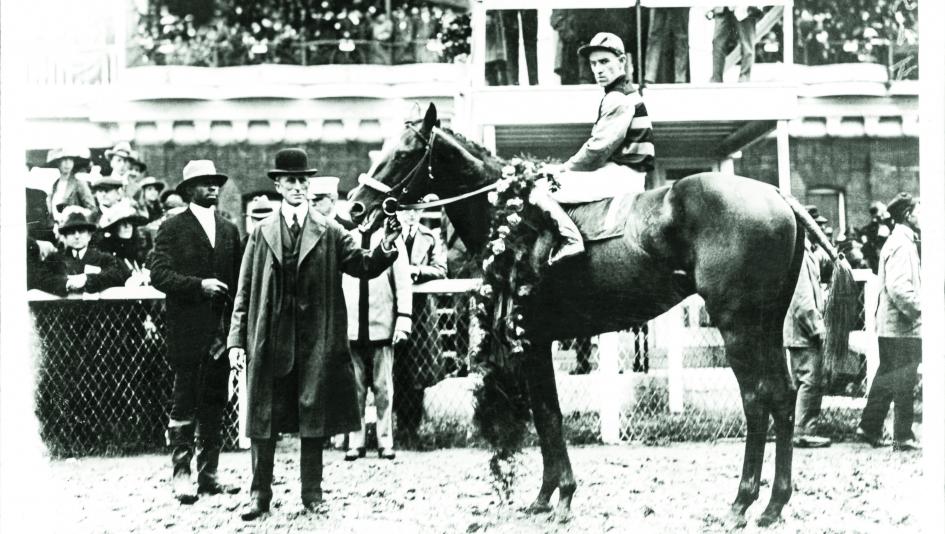
by Terry Conway
John E. Madden was the consummate horseman. He bred champions. He broke, trained and raced many of the good ones himself. The shrewdest horse trader of his era, he cashed them in too.
In the early decades of the 20th century his Hamburg Place Farm in Lexington, Ky., was the celebrated birthplace of Kentucky Derby winners Old Rosebud, Paul Jones, Zev, and Flying Ebony.
SIR BARTON Foaled: Spring 1916 Died: Oct. 30, 1937 Sire: Star Shoot Dam: Lady Sterling, by Hanover Breeder: John Madden (Ky.) Birthplace: Hamburg Place Farm
Hopes were high at Madden's showplace breeding center for greater glory in 1916 when a compact chestnut colt with a crooked blaze was foaled. The colt was given the regal-sounding name Sir Barton. His grandsire, Isinglass, had been crowned England's sixth Triple Crown winner in 1893. Isinglass' son Star Shoot was brought in 1912 to the United States, where he topped the American sire list five times.
by CL Cimino
Around the world, horse racing is considered to be more than just a spectator sport. Rather, it's a longstanding cultural tradition where rituals, codes of conduct, and presentation are just as important as the actual races themselves. If you're heading to the glitz and glamour of the Grand National for the first time this year, a rudimentary understanding of horse racing etiquette will go a long way helping you get the most value out of the experience. Whether you're a dashing gentleman or a refined lady, here are the absolute essentials of horse racing etiquette that you need to be aware of.
1. Dress Code
Perhaps the aspect that most worries first-time attendees is the dress code. As you may have seen from the photographs of major race events that often make the splash on national newspapers, people tend to dress to impress. That's not to say that you need to go all out and spend the equivalent of a month's rent on a tuxedo. Rather, you can simply follow the basics to ensure that you are appropriately dressed for wherever you will be spending the day.
It's worth noting that different races often stipulate vastly different dress codes. Different rules apply depending on the enclosure you are in. For those in the prestigious Royal Enclosure, all men must wear black shoes with matching socks, a top hat, a tie, and ideally a three-button jacket.
Read more: Grand National: The Complete Guide to Horse Racing Etiquette for Beginners
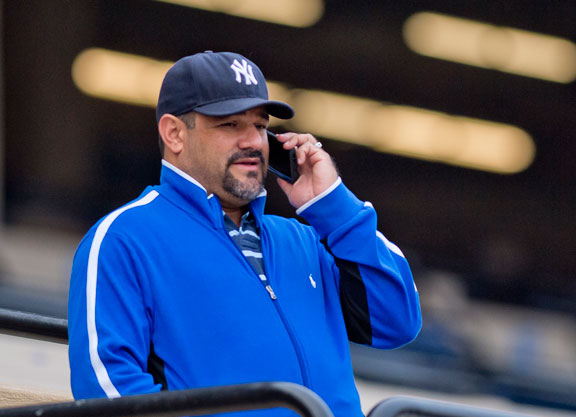
by Bill Finley
Trainers Jorge Navarro and Jason Servis, the two biggest names among the 27 people indicted Monday after an investigation into horse doping, are due back in court Mar. 23 for their arraignment. Both were arrested Monday in Miami and released on bail.
As part of the bail agreement, the court imposed the requirement that Servis and Navarro not have any contact with racehorses without the presence of the third party owner of the premises where the horse is stabled.
The indicted horsemen will be allowed to enter a guilty or not guilty plea at the arraignment.
Read more: Servis, Navarro to be Arraigned March 23rd, Could Face 5 Years Each
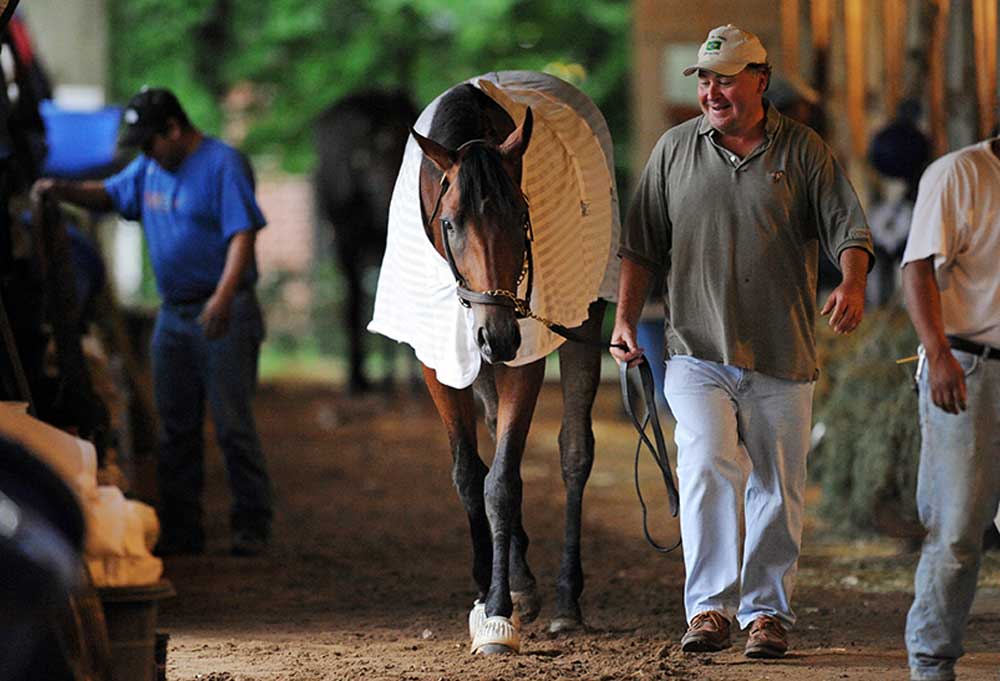
UPDATE: EIE originally published this article in March of 2020. Rick Dutrow is back training and one of his horses, White Abarrio, cruised to a 6 1/4 length victory in the $1 million dollar Grade 1 Whitney Stakes, beating odds-on Cody's Wish who finished 3rd.
by Wallace Matthews
Back in the mid-90s, a thoroughbred owner called Rick Dutrow asking a favor: Did he know anyone at the New York Yankees who might be able to arrange a special visit to the Stadium for his handicapped daughter, who was a huge Yankee fan?
Dutrow didn’t, but he knew Don Zimmer slightly, who at the time was manager Joe Torre’s bench coach, and he knew how to use a telephone. He called the Yankee Stadium switchboard, asked to be connected to the home clubhouse, and somehow found himself speaking to a man inside the Yankees closely-guarded inner sanctum.
“Could you ask Don Zimmer to call Rick Dutrow? He knows my dad, Dickie Dutrow, from horse-racing,’’ he told the man, who was likely a Yankees clubhouse attendant. Ten minutes later, Don Zimmer called back.
“I was hoping and praying he would remember my dad,’’ Dutrow said. “And like the freak he was about horse racing, he remembered like it was yesterday.’’
That phone call started an association that led Dutrow to train horses for Torre, including the filly Sis City, who developed into a pretty good Saturday afternoon horse, ran fourth in the Kentucky Oaks and wound up being sold for $2 million, returning Torre, a one-quarter partner, a cool half-million on his initial investment in a $50,000 claimer.
It also resulted in Torre, who managed the Yankees to four world championships and is in the Baseball Hall of Fame, writing a letter to the New York State Gaming Commission in November 2015 asking it to reconsider the unprecedented 10-year license revocation handed down by the Commission four years earlier.
“My name is Joe Torre. I write in support of Trainer Rick Dutrow. I love horse racing and Rick trained some of my horses. My experience with him was positive. I understand that there is an effort underway to have the Gaming Commission review the penalty imposed on Rick in 2011. I support this effort in the hopes that this focused reconsideration by the Commission will return Rick to his life's work. ‘’
In recent days, Torre’s support -- along with that of trainer Dale Romans, owner Michael Dubb and vet Dr. Larry Bramlage, to name just a few – has been bolstered by the addition of noted civil rights attorney Norman Siegel and the prestigious Manhattan law firm of Paul, Weiss to the cause.
Their mission is to get Dutrow’s sentence reduced to time served and his license to train reinstated, and their reason is simple: When it comes to training thoroughbreds, many owners have expressed that no one does it better, or safer, than Rick Dutrow.

by CL Cimino
The Royal Ascot can boast of a long and prosperous history. Queen Elizabeth II attends this event every year along with the other members of the Royal Family. This racing event is hugely popular in the UK with many fans searching Royal Ascot offers for 2020 during the summertime.
1- Brown Jack
Brown Jack is one of the most popular racehorses in the history of British racing. His achievements in the Queen Alexandra Stakes looks unlikely to be repeated by any other horse- he won this race for a record six seasons in a row.
What makes his achievements even more amazing is that he started as a hurdler before he switched to flat racing later in his career.
Brown Jack won the Ascot Stakes in 1928 before he went on an incredible winning run from 1929 to 1934. He also won the Goodwood Cup, Champion Hurdle, Doncaster Cup, Chester Cup, and the Ebor Handicap. His trainers were Aubrey Hastings and Ivor Anthony while the British military officer Sir Harold Wernher was his owner.
001.jpg)
People are greatly passionate about horse racing in the UK. The Cheltenham Festival and the Grand National are some of the most popular events in the whole world. A great majority of fans attend these events with horse racing betting very common among the race-goers.
1- Sprinter Sacre:
The story of Sprinter Sacre is hugely inspirational for people desiring glory and success in their fields. Despite many odds, the great horse won many racing honors and carved a big name for himself in the United Kingdom.
Sprinter Sacre looked destined for glory from the very beginning. He won one race after another and garnered headlines from the very start of his career. He claimed notable victories at the Tingle Creek Chase, Queen Mother Champion Chase, and Arkle Challenge.
However, his racing career got in jeopardy when he was found to be suffering from a heart complication after he pulled up in a race in 2013. His performance got greatly affected by this problem as he struggled to win any racing contest.
But his perseverance paid off as he finally managed to secure a victory in about two and a half years. And once his losing jinx was broken, he produced other important victories. He claimed the 2016 Queen Mother Champion Chase even after committing a big mistake during the race.
2- Red Rum
Red Rum is a household name in the United Kingdom. He has the distinction of being the only racehorse in history who won the Grand National for a record three times.
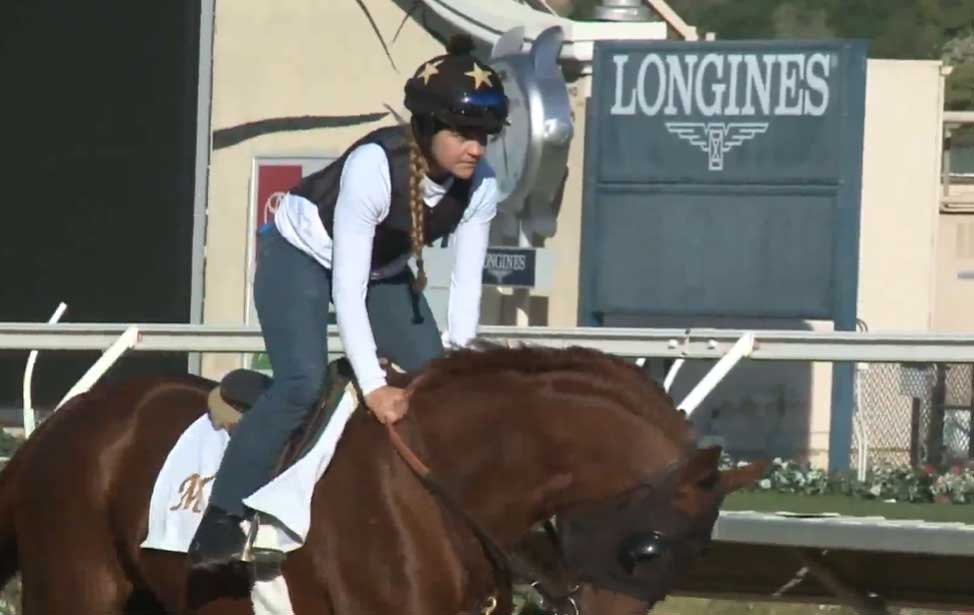
by Kalyn McMackin
San Diego -- Ferrin Peterson is no stranger to hard work. The Carlsbad resident works two jobs: one as a professional jockey and the other as a veterinarian, making her quite the dual threat when it comes to horse racing.
At 5'4" and 110 pounds, Peterson's stature looks like most jockeys -- except for the long blonde braid tucked under her black riding helmet.
"I want to see how far I can take this jockey career," Peterson said. "I would love to be the first female to win the Kentucky Derby. It's never happened and I think that's crazy."
Before earning her jockey's license in 2018, Peterson raced part-time. She's competed in 230 races and won 15 of them, often as the only woman riding.
"There's this perception that we're not as strong as the men or maybe we'd be more scared. But as I've been here longer, I can tell people are starting to change their opinion about me," she said.
Read more: Female Jockey and Veterinarian Brings Double the Expertise to the Track
- The Cheltenham Festival is Flying High
- More Than A Pinhook: Life Lessons From A Sassy Bay Filly
- A Primer on Thoroughbred Racing: the United States, United Kingdom and Australia
- A Young Man, an Old Man, A Second Chance, and a Dream
- Royal Ascot: Time To Dress Up
- Century Downs to host Canadian Indian Relay Racing Championships
- Can Tiger Roll Win A Third Grand National?
- Twelve Things You Should Know About the 2019 Preakness Stakes
- Country House, Maximum Security, the Kentucky Derby, and the Question Nobody’s Asking
- Q&A with Alexis Garske of #IAmHorseRacing









